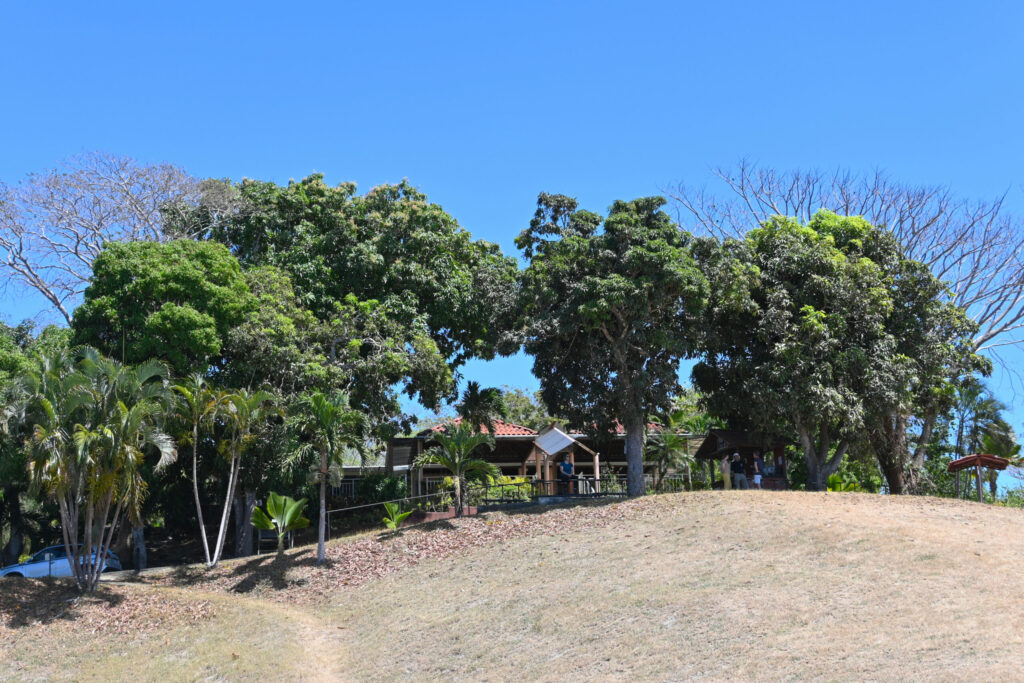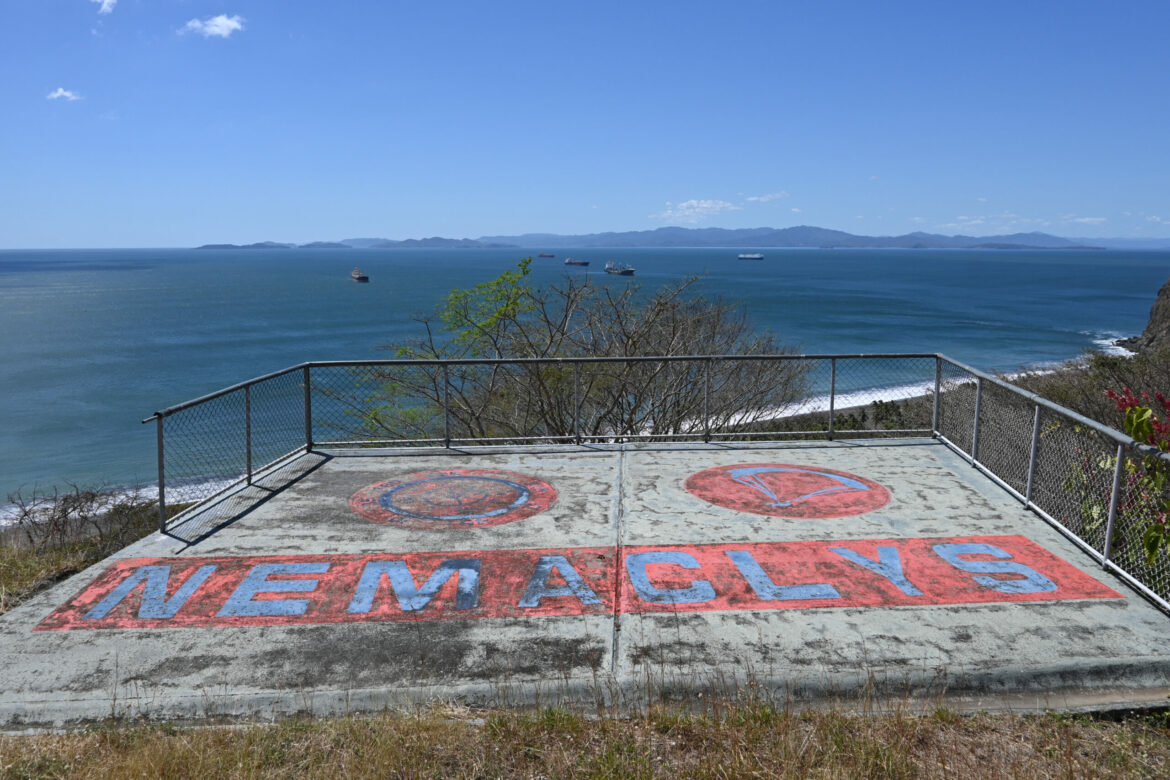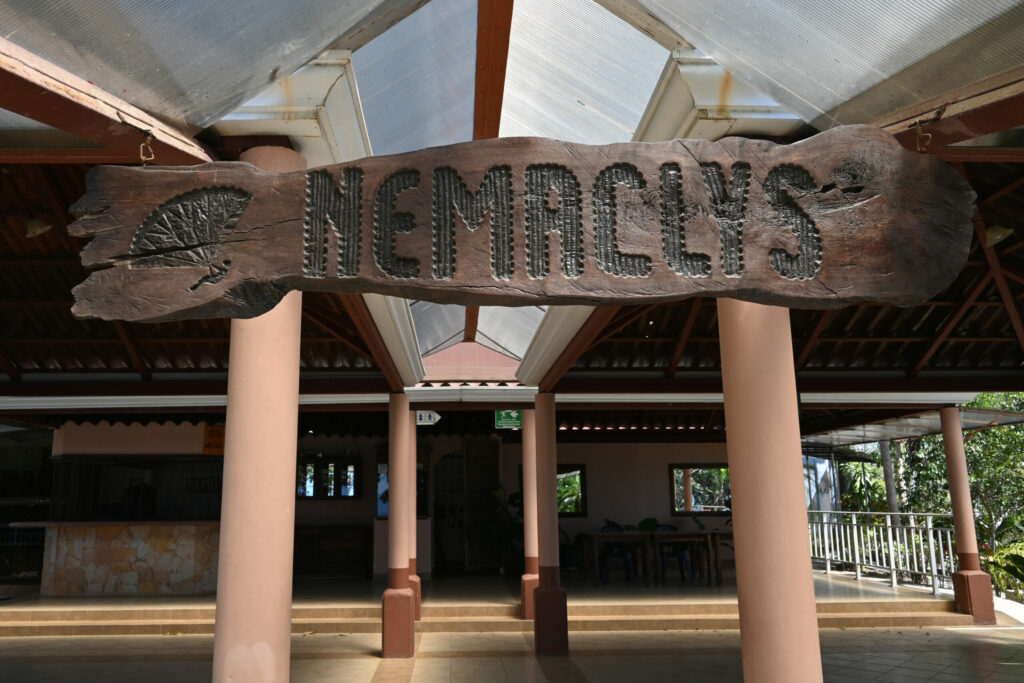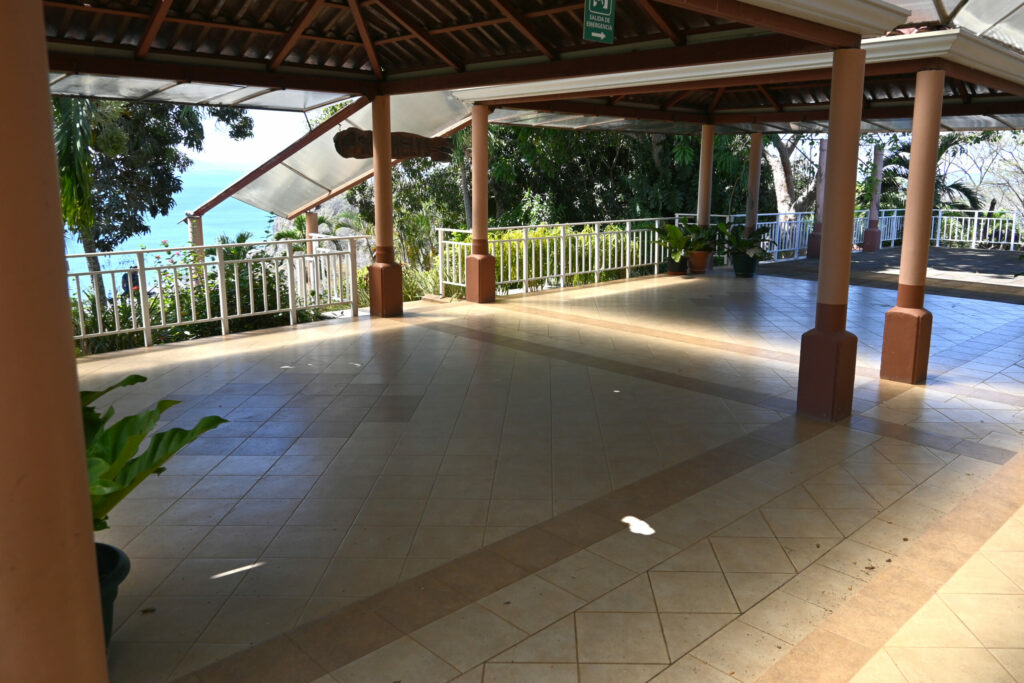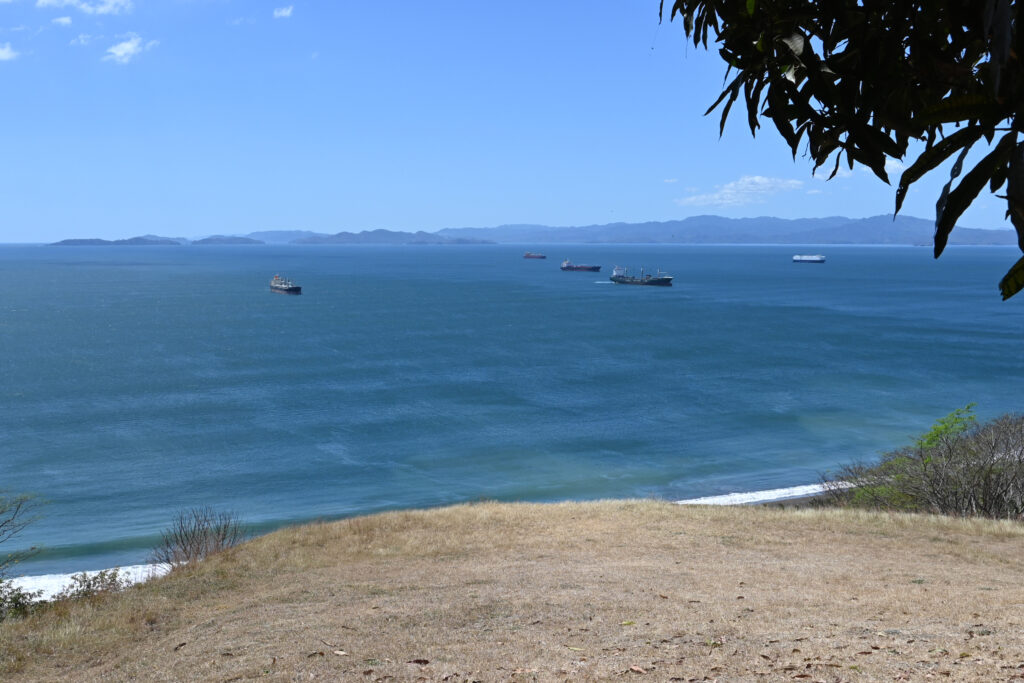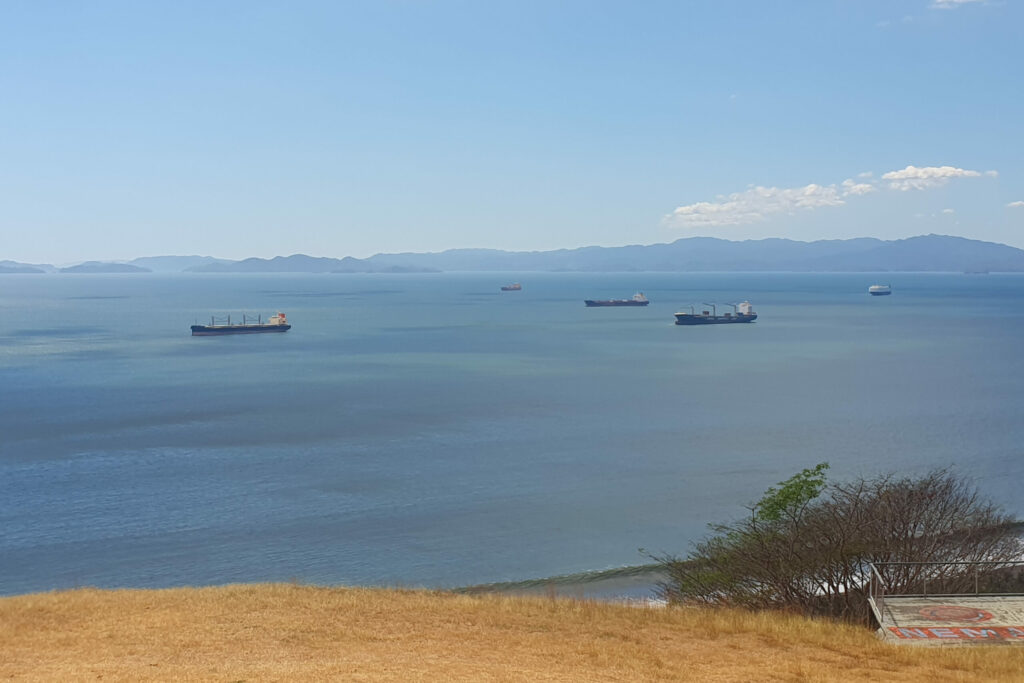Our next flying spot is said to be the cradle of paragliding in Costa Rica. That’s where Jean-Claude emigrated to from Switzerland in 1999. Over the years he built up a paragliding paradise with a vast takeoff, restaurant, viewing area, top-landing space, etc. From the launch, you overlook the bay of Caldera, a small village, not too far from the capital of Costa Rica, San José.
Standing up there we could still imagine how buzzing the place called Nemaclys must have been. For a few years now, Jean-Claude is slowly scaling operations back. He usually only opens up the gates on weekends, the restaurant is vacant and while it is well-maintained, you see the signs of age. However, it is still a beautiful spot and Jean-Claude has plans to open up an AirBnB for paragliders which will surely be very popular.
As in Rivas, the Carribean trade winds got into our way a bit. To fly in Caldera the sea wind from the south must push against the wind from the north. The stronger the northern wind, the longer it takes to switch if it does at all. During the day you can watch a line forming on the sea where the two winds meet. The water looks slightly different on both sides. When it is moving towards the coast and the ships laying in the bay turn towards the south you can expect the wind to change eventually. After it stabilizes, you can take off.
This and a lot more Jean-Claude shared with us while we were waiting (see our site guide for a summary). He is truly nice and welcoming and spent quite some time with us. In general, we didn’t mind at all relaxing a bit at the takeoff. There was always a refreshing breeze and it was calming to watch the sea, birds, and clouds.
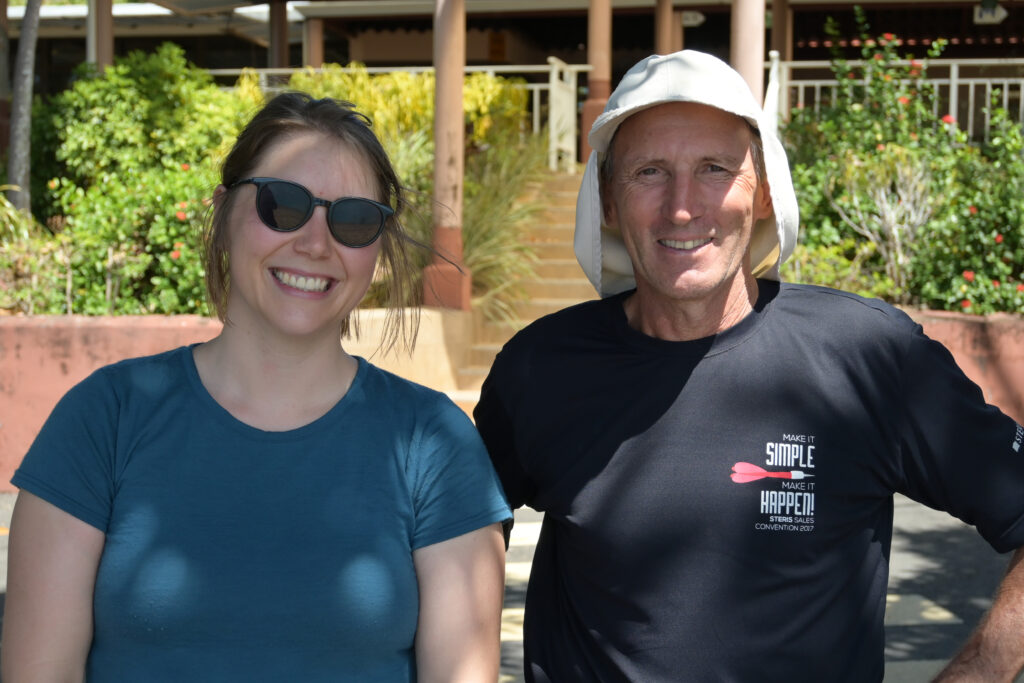
We also learned about a shortcut to get to the estate. It crosses a decommissioned train track and seems like it hasn’t been used a lot recently — nature is taking back control. As Katy wrote on our Polarsteps travel log: “While I was quite cautious and brave in the face of all the deadly poisonous spiders, scorpions and insects that could hypothetically be lurking around us, Simon, meanwhile, was completely ignorant and dashed through the bushes”. The path was much quicker and nicer than the road, though, and we didn’t encounter any wildlife except a huge dead lizard.
Out of the four days we were in the region, we could fly on three of them. However, the first two weren’t ideal. The takeoff conditions were difficult (probably caused by rotors of nearby trees) and flying wasn’t as smooth as expected. On day two we even got into the wind shear of the northern and southern winds and had strong lift across a large area. I wasn’t completely sure what was going on so I did a rather fast descent with spirals and big ears. Katy followed soon after, even though she interpreted the conditions correctly. Better safe than sorry!
The day that wasn’t flyable at all we spent in Puntarenas. A popular tourist destination with a long beach stretching far into the ocean. The promenade features an endless amount of restaurants, hotels, and stalls. Almost all of the stalls were curiously selling the same thing: Churchill. A drink made of shaved ice, ice cream, condensed milk, and syrup. We rather enjoyed some cas juice (a kind of guava) with slush ice and a vegetarian taco plate, which was fabulous (and only listed on the special vegetarian menu, the default one only listed meat dishes).
After some uncertainty we decided to stay one last day in Caldera and boy, it was the right decision. Finally, we had the conditions we were looking for. Takeoff was a piece of cake and we could basically fly indefinitely. I practiced SAT spirals and managed to do three top landings (i.e. landing back at takeoff) — my first ever! It was pure joy and excitement 😍
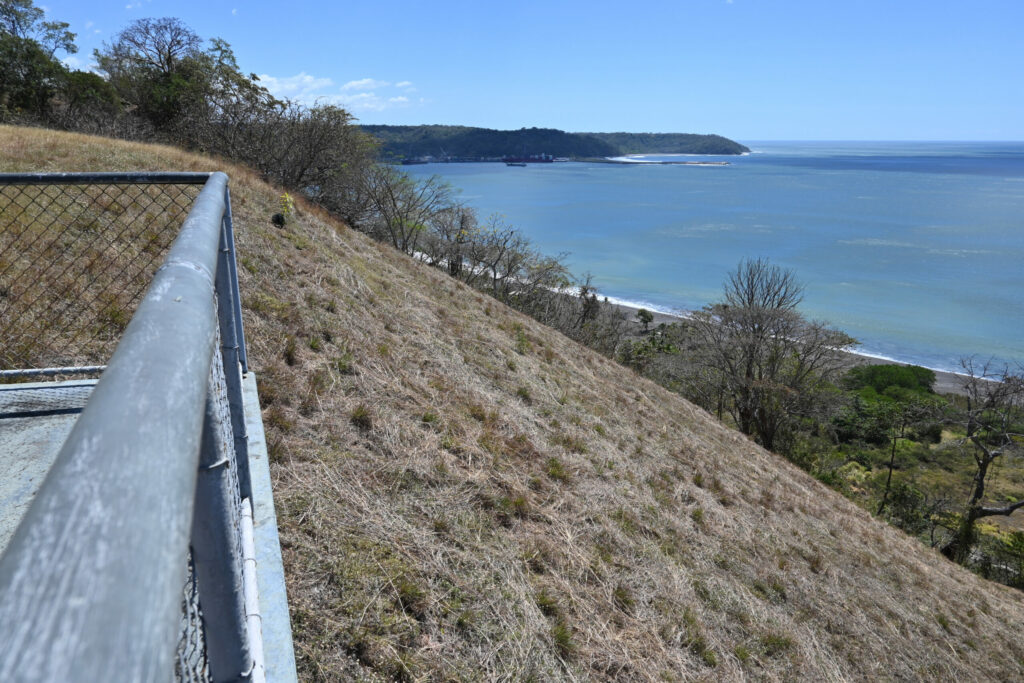
Back on the ground, we needed to learn an important lesson: don’t trust the internet, talk to the locals! We waited at the designated bus station and the bus just passed by us, stopped 100 meters further down the road at a random location, and drove away without us. I was quite mad. We walked back to our accommodation (Cabinas Y Pulperia Cerromar) and they explained to us that, for whatever reason, this location we deemed random is indeed the “correct” spot.
Our hosts were generally really nice and made a real effort to converse with us and make us feel at home. They showed us their garden and monkeys climbing around in their backyard, gave us fruits (kind of miniature apples, we aren’t quite sure), and shared family stories with us. While the accommodation was not that comfortable (no air conditioning and a worn-out mattress) we would still be happy to come back.
Now knowing the correct bus stop, we caught the following bus and still made it to our next destination, Jacó.
